Descobrindo o que você precisa
O sistema de som automotivo "ideal" não é necessariamente o mais barulhento ou o mais caro. É o que melhor atende às suas necessidades. Então, o primeiro passo é descobrir quais são suas necessidades. Comece perguntando a si mesmo:qual é a única coisa que você quer que seu novo som do carro faça por você? Se você não encontrar uma resposta imediatamente, comece dando uma olhada no seu sistema atual.
Que tipo de sistema de som automotivo você tem agora?
Como o som do seu sistema atual faz você se sentir? Você se pega batendo o pé ou tamborilando com os dedos no volante? Uma seção de ritmo funky faz você sorrir? Um solo de guitarra de blues causa arrepios nas costas?
Não? Então o som é chato, monótono, metálico ou fraco? Você provavelmente está ouvindo um rádio de carro que está lutando para dirigir alto-falantes frágeis e antigos de fábrica. A boa notícia é que você tem muitas opções para escolher ao substituir os vários componentes do seu sistema de áudio.
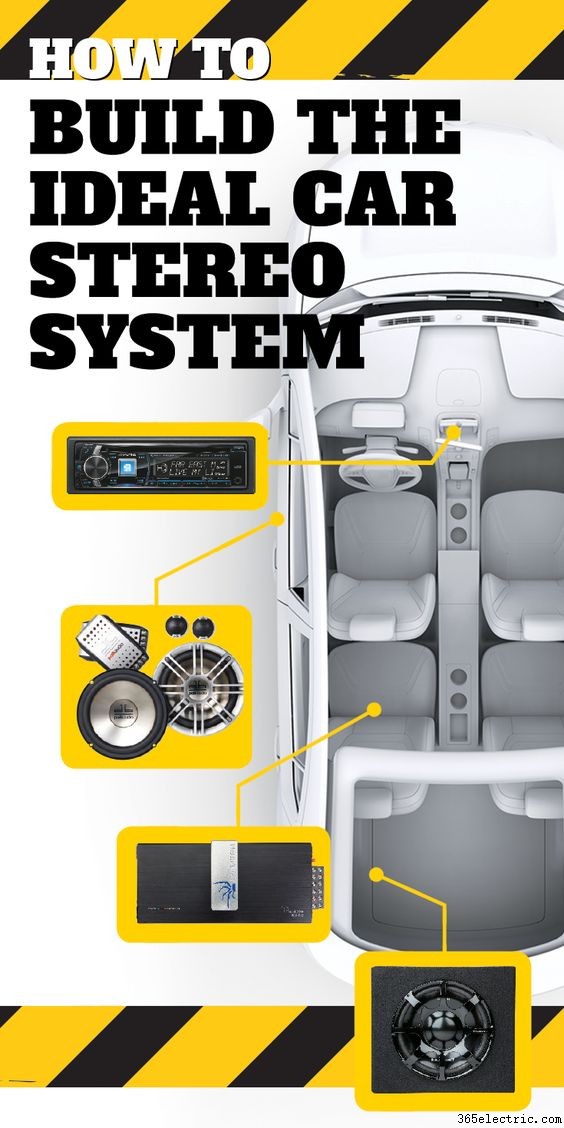
Mas e se você não tiver certeza sobre qual componente é o problema?
Nem sempre é fácil diagnosticar o que está causando problemas no sistema de áudio/vídeo de um veículo. Você sabe que parece ruim, mas não necessariamente sabe por quê. Você não precisa ser um especialista em áudio de carro para descobrir isso. Aqui estão alguns passos simples que você pode seguir para restringir as coisas:
Primeiro, ouça por alguns minutos enquanto estaciona na garagem.
Gire todos os botões e empurre todos os botões. Todas as funções parecem funcionar bem? Ouça cada alto-falante individualmente ajustando os controles de balanço e fader. Aumente o volume e os controles de tom. Todos os alto-falantes estão funcionando ou você ouve um leve ruído ou um zumbido?
Em seguida, dirija e ouça com atenção.
Vá para a estrada e aumente o som do seu carro alto o suficiente para ser ouvido acima do ruído da estrada. O que você ouve? Como isso soa? O que você sente que está perdendo?
Finalmente, encontre um lugar para estacionar o carro.
Mas não abaixe a música ainda. Mantendo o volume no "nível da estrada" (mas sem o barulho da estrada para confundir seu ouvido), você ouve muita distorção? Defina os controles de balanço, fader e tom bem no meio. Como está o som geral dos alto-falantes? O que está faltando? Graves? Agudo? Clareza?
Agora, avalie seu equipamento atual.
Faça uma lista dos componentes do seu sistema e avalie-os em uma escala de 1 a 10. Você obterá o melhor retorno possível substituindo primeiro os componentes de classificação mais baixa. Se o receptor do carro tiver a classificação mais baixa, a correção é relativamente óbvia. A instalação de um novo receptor é frequentemente um dos primeiros passos para obter um som melhor, pois o sinal de áudio enviado para o resto do seu sistema é muito mais limpo e mais forte quando vem de uma fonte de reposição.
O que você gostaria que seu rádio fizesse que não faz agora?
Fazer chamadas e transmitir música usando uma conexão Bluetooth®?
Sintonizar transmissões por satélite ou HD Radio™?
Controlar um iPod®, iPhone®, Android™ ou outro dispositivo de áudio portátil?
Reproduzir CDs ou arquivos MP3?
Reproduzir DVDs em um display retrátil ou embutido?
Tocar mais alto sem distorcer?
Saber o que você quer que seu receptor faça torna mais fácil escolher o caminho certo para você e seu carro. Se você sabe que o receptor não é o problema, ou simplesmente não quer se separar do seu receptor atual, você pode se concentrar em construir os outros componentes no sistema do seu carro. Se seus alto-falantes soarem bem em volume moderado, mas não em volume de estrada, você pode querer começar adicionando mais potência. Se os alto-falantes soarem mal o tempo todo, você provavelmente deve substituí-los primeiro.
Então, quais são suas opções para melhorar o som do seu carro?
Agora que você avaliou seu sistema estéreo atual, é hora de abordar as diferentes necessidades que você identificou.
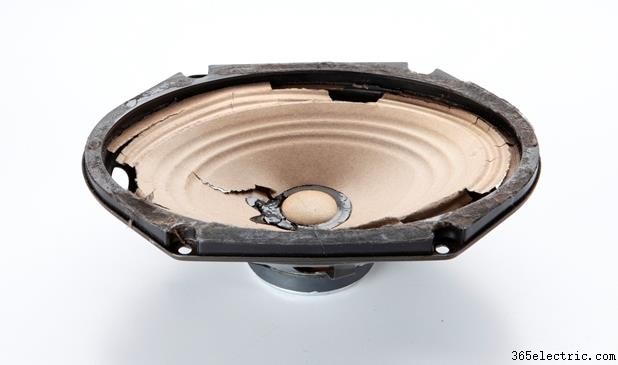
Precisa substituir os alto-falantes do carro velhos ou quebrados?
A maioria dos alto-falantes automotivos instalados na fábrica são feitos de papel leve ou outros materiais baratos de produzir. Mesmo os alto-falantes "premium" de fábrica tendem a se desgastar e distorcer muito mais rápido do que os alto-falantes do mercado de reposição, portanto, mesmo que soassem bem quando você comprou o carro, eles provavelmente caíram um pouco ao longo dos anos.
Um novo conjunto de alto-falantes de pós-venda melhorará toda a gama do seu som, desde graves mais profundos até agudos mais bem definidos. O melhor de tudo, eles são fáceis de instalar e geralmente mais acessíveis do que um receptor.
Os alto-falantes do mercado de reposição são feitos com materiais de alta qualidade, para oferecer um som muito melhor e maior durabilidade. Alto-falantes full-range (alguma combinação de um woofer, um midrange e/ou um tweeter) se encaixam facilmente nos locais de fábrica do seu carro e provavelmente são sua melhor aposta para um som aprimorado. Se você quiser ouvir tudo o que sua música tem a oferecer, use um conjunto de alto-falantes componentes com woofers e tweeters separados para transformar seu painel em um palco de concerto.
Sua música precisa de um pouco mais de "oomph"?
Se o seu som parece carecer de algo, você precisa dar mais potência aos seus alto-falantes. Um amplificador aumenta o volume do seu sistema sem distorcê-lo, então você não terá problemas para ouvir suas músicas com as janelas abertas e o teto solar aberto. Amplifiers also give your music new life by bringing out musical details and clarity, resulting in better sound quality at all volume levels.
Do you drive a noisy car?
Is your music getting serious competition from your car's exhaust note? You should look into sound deadening materials. A little Dynamat in your vehicle will help keep road noise, vibration, and exhaust rumblings from interfering with your musical enjoyment.
Do you want to feel the beat?
If you like your sound, but want some added depth, a subwoofer is a great addition to any system. Augmenting your setup with a subwoofer driven by an appropriate amplifier will fill in the low notes that small full-range speakers aren't designed to hit, giving you a richer overall sound. You can choose from component subs to customize your sound or preloaded enclosures for easy installation.
If you want a sub, but are concerned about how much space it might take up in your car, then you might want a powered subwoofer or a vehicle-specific subwoofer enclosure. These subs mount in your cargo area or under a seat, so you don't lose much storage space.
What kind of music do you like?
Think about what kind of music you listen to, and also how you listen to your music. If you like it loud and heavy, you're going to want outboard amplifiers and a subwoofer or two for sure. Is jazz or classical music more your style? A new receiver should provide plenty of RMS wattage to a set of full-range speakers — though you'd still benefit from the low-frequency output of a subwoofer.
Now, let's get to the source — the music source, that is
If the car receiver ranked the lowest on your list of priorities, then you have several options. Think about your driving and listening habits to decide which features you want. It's important to think about what your other primary sources of music are, and whether or not you can enjoy them in your car.
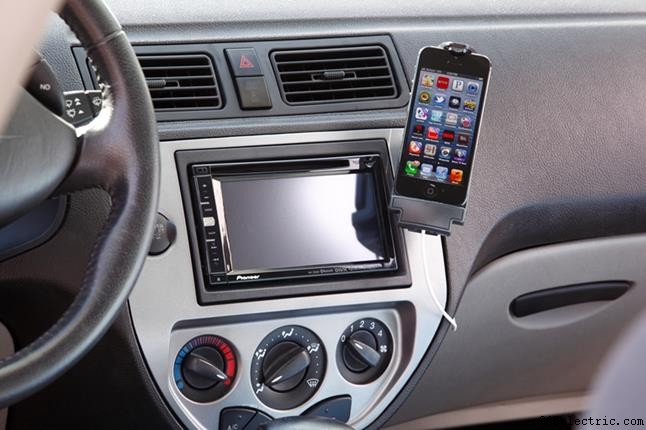
Do you rely on your phone for music and more?
If you use your phone for just about everything, including music, look for a receiver that features a USB port and Bluetooth®. You can play digital music files stored on your phone, and, if you have Bluetooth, stream internet radio. You can also play tunes stored on a thumb drive or plug in an MP3 player with a USB connection.
If you own a portable music player or iPod®, look for a receiver with an aux input or two. USB inputs will charge your iPod when it's connected, and offer direct audio connection for faster signal transfer. If you get a receiver with a large monitor, you'll get the added convenience of touchscreen control and easy viewing of songs and playlists, even album art and video.
If you don't use CDs anymore, we offer a number of "mechless" digital media receivers that don't even have CD players. If you still enjoy your discs (Which is totally cool!), most new CD receivers will play just about any format that fits on a disc.
Is your car your office?
Receivers that have Bluetooth® capability are really convenient if you make a lot of phone calls in your car. In most cases, you can hear callers over your speakers simply by pressing a button on your receiver. And if you have a display screen, you can see the Caller ID and dial via touchscreen. if you're a Pandora fan, you can stream your music wirelessly through the stereo.
Do you travel a lot?
If you spend a lot of time in your car, you should consider investing in a new receiver with multiple inputs and a wide list of features. USB and aux jacks are essential for iPods and other devices, and Bluetooth is a great thing to have for hands-free calling and music streaming. Many receivers are SiriusXM-ready, so all you need is a subscription to start enjoying the amazing variety of commercial-free music, live sports, and talk. Best of all, you get coast-to-coast coverage so you won't ever lose a station again.
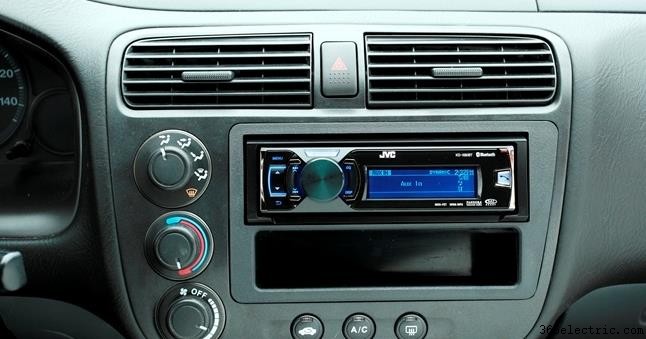
Like to take the family on long road trips?
An in-dash video receiver can change your driving experience. Or better yet, go for back seat video. Your passengers can be quietly entertained in the back seat, so you can concentrate on getting everybody there safely. Replace your headrest with one that has a built-in screen, or purchase a model that simply slides over your existing headrest. Overhead monitors, which mount on your vehicle's ceiling and fold up when not in use, are also a convenient option. Keep in mind that some DVD players also let you connect with video game systems.
And for those, um, "directionally challenged" individuals amongst us?
End the "should we stop to ask for directions?" debate by installing a GPS navigation system in your car. Just enter your destination into the trip computer and follow the voice prompts and visual directions. You can also see points of interest and updated traffic information. Most in-dash display monitors are also compatible with easy-to-install rear view cameras, which will help the "spatially challenged" avoid backing into lampposts, garage walls, and other cars.
What if I can't change my stereo?
We also carry a wide variety of adapters and other solutions for adding most of these options to your factory stereo. Use our "Outfit My Car" tool to see what's available for your vehicle.
Finding the right receiver is easier than you think (Crutchfield Research Photo)
What kind of budget do you have in mind?
Think about how much you want to invest in your car A/V system. The goal, of course, is to get the system that you want without paying extra for features that you don't need.
Do you want to purchase everything at once, or would you rather build your system one or two pieces at a time? A gradual approach to system building can put even high-end systems within anyone's grasp.
Find what fits your vehicle.
You can do that right here, right now, online. Just use our vehicle selector to see which items will work for your vehicle. It's fast and totally easy.
Once you enter your vehicle information, you can search the car audio site for in-dash receivers, car speakers, and everything else that will fit your vehicle.
You can also get an idea of how easy it will be to install the gear you're considering. Keep in mind that you can stop by AutoSounds anytime to get a quote on equipment and installation and get it all done at one place.
Still, need help deciding?
By now, you're a lot closer to creating your ideal stereo system. You've listened carefully to your current system and pinpointed the ways you would like to improve it. And you probably also have a short list of your favorite components. Stop by to talk to one of our car stereo experts at SB Auto Sounds at 1024 De La Vina St or call (805) 962-6111
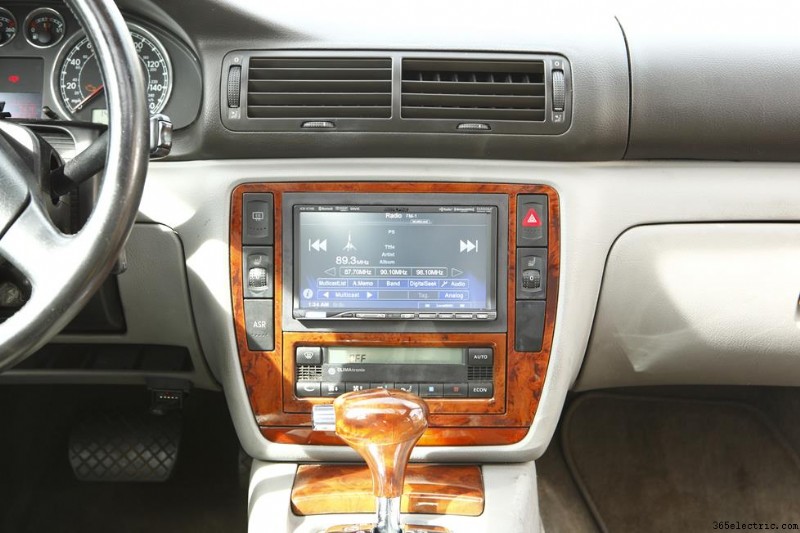
Article by Charlie Pastorfield, Cruchfield




